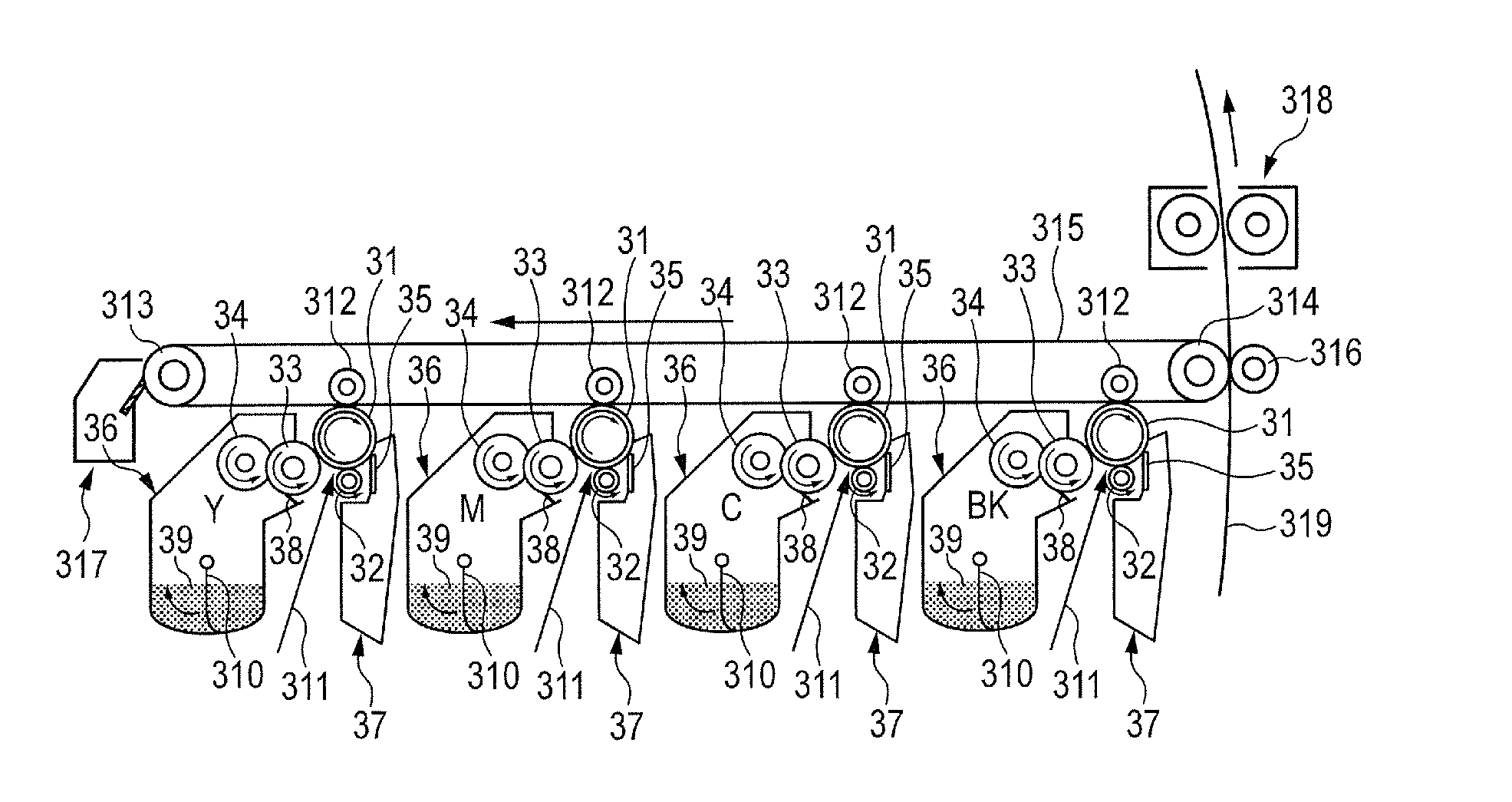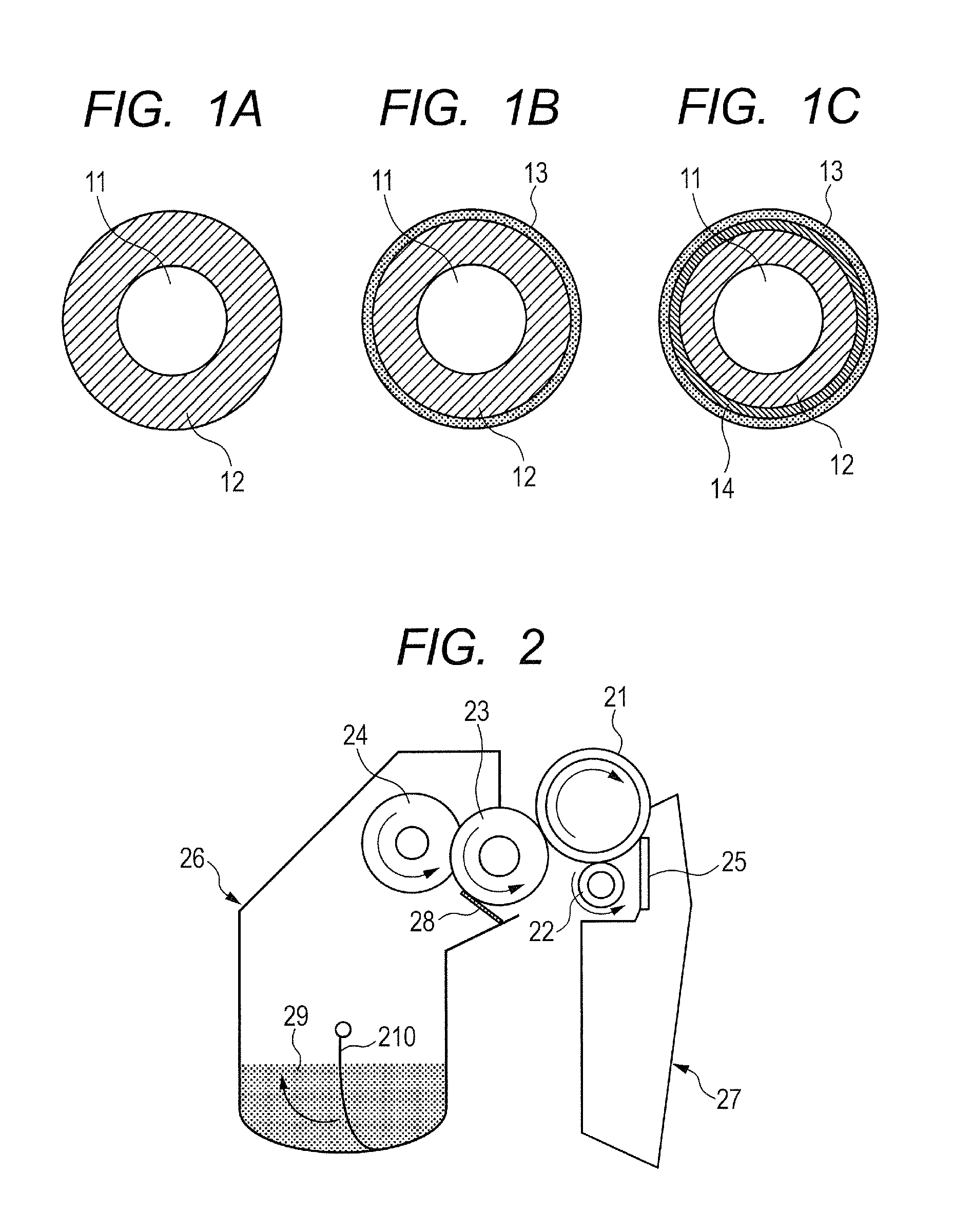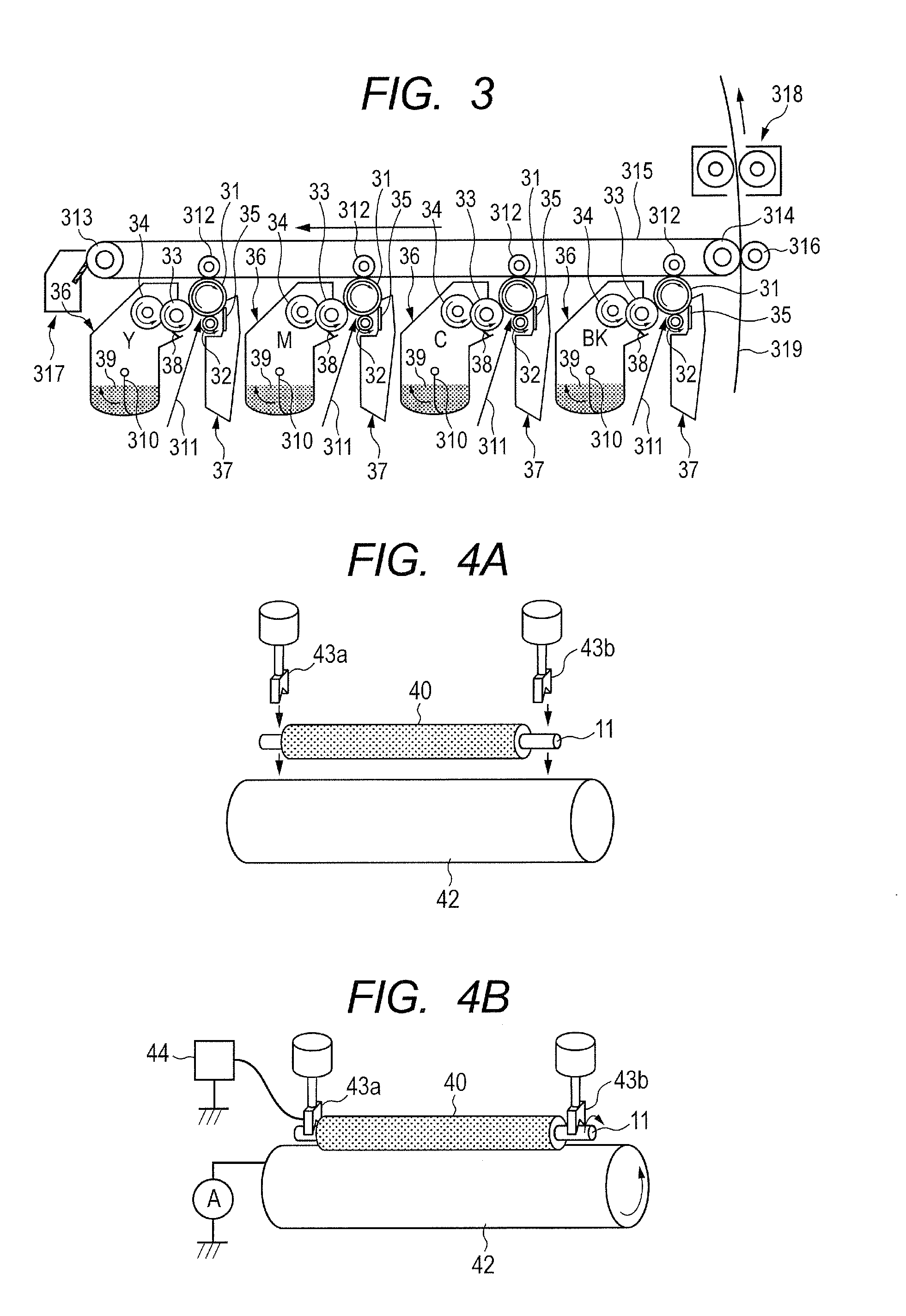Electro-conductive member, process cartridge, and electrophotographic apparatus
a technology of electrophotography and electro-conductive components, applied in the direction of electro-graphic process apparatus, thin material processing, instruments, etc., can solve the problems of pinhole leakage, portion that cannot be charged, and excessive resistance reduction of electro-conductive components in the h/h environment, so as to reduce resistance value under the l/l environment, suppress excessive resistance reduction, and optimize resistance value
- Summary
- Abstract
- Description
- Claims
- Application Information
AI Technical Summary
Benefits of technology
Problems solved by technology
Method used
Image
Examples
production example 1
Production of Elastic Roller
[0126]An elastic roller was produced according to the following procedure.
[0127]
[0128]An “A-kneading rubber composition 1” was obtained by mixing respective materials whose kinds and amounts were shown in Table 1 below with a pressure kneader. Further, the respective materials whose kinds and amounts were shown in Table 2 below were mixed into 177 parts by mass of the A-kneading rubber composition with an open roll. Thus, an “unvulcanized rubber composition 1” was prepared.
TABLE 1Blending amountMaterial(part(s) by mass)Raw rubberNBR (trade name: Nipol100DN219, manufactured byZEON CORPORATION)Electro-Carbon black40conductive agent(trade name: TOKABLACK#7360SB, manufactured byTOKAI CARBON CO., LTD.)FillerCalcium carbonate20(trade name: Nanox #30,manufactured by MARUOCALCIUM CO., LTD.VulcanizationZinc oxide5accelerating aidProcessing aidStearic acid1
TABLE 2Blending amountMaterial(part(s) by mass)CrosslinkingSulfur1.2agentVulcanizationTetrabenzylthiuram4.5acc...
production example 2
Preparation of Coating Liquid
[0132]A coating liquid containing a binder resin for forming the electro-conductive layer according to the present invention was prepared according to the following procedure. It should be noted that the binder resin of the present invention is produced from: an ionic electro-conductive agent (I) having a reactive functional group as a raw material; a carrier molecule (II) which is a counter ion of the ionic electro-conductive agent; and a binder resin (III) as a raw material.
[0133]
[0134]8.56 Grams (56.5 mmol) of glycidyltrimethylammonium chloride as an ionic electro-conductive agent (I) having a reactive functional group were dissolved in 50 ml of purified water and then the solution was stirred for 1 hour. Next, 16.22 g (56.5 mmol) of lithium cyclohexafluoropropane-1,3-bis(sulfonyl)imide as a carrier molecule (II) which was a counter ion were dissolved in 50 ml of purified water and then the solution was stirred for 1 hour. Next, those two kinds of aqu...
example 1
1. Production of Electro-Conductive Roller 1
[0139]The elastic roller 1 obtained in Production Example 1 was coated with the coating liquid 1 obtained in Production Example 2 by a dipping method involving immersing the roller in the liquid with its longitudinal direction defined as a vertical direction. An immersion time was set to 9 seconds, an initial lifting speed was set to 20 mm / s, a final lifting speed was set to 2 mm / s, and a speed was linearly changed with time between the initial and final speeds. The resultant coated product was air-dried at 23° C. for 30 minutes. Next, the product was dried with a hot air-circulating dryer set to 90° C. for 1 hour. Further, the product was dried with a hot air-circulating dryer set to 160° C. for 3 hours. Thus, an electro-conductive layer was formed on the outer peripheral surface of the elastic roller 1. As a result, a “electro-conductive roller 1” was produced.
2. Characteristic Evaluation
[0140]Next, the electro-conductive roller 1 was su...
PUM
 Login to View More
Login to View More Abstract
Description
Claims
Application Information
 Login to View More
Login to View More - R&D
- Intellectual Property
- Life Sciences
- Materials
- Tech Scout
- Unparalleled Data Quality
- Higher Quality Content
- 60% Fewer Hallucinations
Browse by: Latest US Patents, China's latest patents, Technical Efficacy Thesaurus, Application Domain, Technology Topic, Popular Technical Reports.
© 2025 PatSnap. All rights reserved.Legal|Privacy policy|Modern Slavery Act Transparency Statement|Sitemap|About US| Contact US: help@patsnap.com



